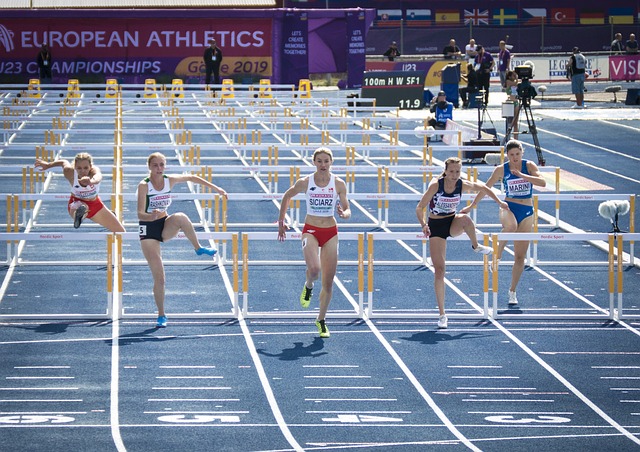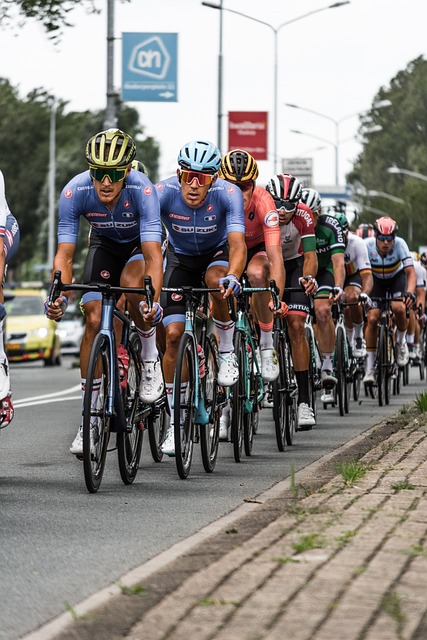里on regenerative medicine is transforming athlete medical care by.. .it's revolutionizing how athleteson sportson- aggressory sports, such as football, basketball, and running, manage pain & injuries without the pierononononononononononononononononononononononononononononononon
Regenerative medicine stands at the forefront of modern healthcare, offering promising solutions for athletes grappling with persistent pain and injuries that previously might have ended careers. This article delves into the transformative impact of these advanced recovery methods on the athletic community. From the healing potential of Platelet-Rich Plasma (PRP) therapy to the groundbreaking applications of stem cell therapy, we explore how these innovations are not just restoring athletes to their pre-injury state but also enhancing their performance beyond what was once thought possible. Join us as we examine the cutting-edge treatments that are reshaping athlete medical care and paving new paths for recovery and success in sports.
- Regenerative Medicine: A Game-Changer for Athletes Facing Pain and Injury
- Understanding Regenerative Medicine in Athlete Medical Treatment
- The Role of Platelet-Rich Plasma (PRP) Therapy in Healing Athlete Pain
- Stem Cell Therapy: An Innovative Approach to Athletic Recovery and Performance Enhancement
- Athlete Success Stories: Regenerative Medicine's Impact on Sports Injuries and Chronic Pain
Regenerative Medicine: A Game-Changer for Athletes Facing Pain and Injury

Athletes are subject to a high degree of physical stress and injury due to the intense nature of their sporting activities. Traditional athlete medical treatments often focus on pain management and recovery through rest, physical therapy, and sometimes surgery. However, regenerative medicine is emerging as a transformative approach in addressing athlete pain and injury, offering a potential path to healing without the lengthy downtime associated with conventional treatments. This innovative field harnesses the body’s natural healing processes by utilizing cells, tissues, and molecular agents to restore the affected areas, thereby promoting faster recovery and improved function.
Regenerative medicine encompasses therapies such as platelet-rich plasma (PRP) injections, stem cell therapy, and advanced biologic treatments. These treatments are tailored to the specific needs of athletes, aiming to repair damaged tissues, reduce inflammation, and alleviate chronic pain effectively. The integration of these regenerative techniques into athlete medical care is revolutionizing the way injuries are treated, allowing for a more targeted and effective recovery process. This not only accelerates the healing time but also enhances the overall health and performance of athletes post-injury.
Understanding Regenerative Medicine in Athlete Medical Treatment

Regenerative medicine has emerged as a transformative field within athlete medical treatment, offering innovative solutions for athlete pain and injuries. This discipline harnesses the body’s natural healing processes to repair or replace damaged tissues, potentially restoring an athlete’s performance and function without relying solely on surgery or long recovery periods. Techniques such as stem cell therapy, platelet-rich plasma (PRP) injections, and bone marrow aspiration are increasingly being utilized to address a spectrum of sports-related injuries, from acute trauma to chronic conditions like tendinopathy and osteoarthritis. These treatments aim to reduce recovery time and enhance the efficacy of rehabilitation protocols, enabling athletes to return to their sport with improved resilience and performance capabilities.
The integration of regenerative medicine into athlete medical treatment regimens is a response to the growing need for effective, less invasive procedures that minimize downtime. For instance, PRP therapy involves isolating growth factors from a patient’s blood and reintroducing them into an injury site to accelerate healing. Stem cell therapies offer the promise of regenerating damaged tissues with cells capable of differentiating into various types of cells, thereby repairing or replacing damaged structures such as cartilage, ligaments, and tendons. These cutting-edge treatments are part of a comprehensive recovery solution that prioritizes the athlete’s health and long-term well-being, ensuring they can compete at their highest level while managing pain effectively.
The Role of Platelet-Rich Plasma (PRP) Therapy in Healing Athlete Pain

Athletes often encounter pain as a result of intense training and competition, which can impede their performance and longevity in their sport. Platelet-Rich Plasma (PRP) therapy has emerged as a promising modality within the realm of athlete medical treatments, offering a non-invasive approach to healing. This innovative technique involves isolating a patient’s own platelets, which are rich in growth factors, and reinjecting them into the injured area to accelerate the natural healing process. The high concentration of platelets in PRP stimulates tissue repair by promoting cellular proliferation and angiogenesis, leading to improved pain management for athletes. Clinical studies have demonstrated that PRP injections can effectively treat various types of musculoskeletal injuries, from acute tendonitis to chronic joint issues, thereby allowing athletes to recover more swiftly and return to their sport with greater ease. The efficacy of PRP therapy is supported by its growing acceptance among sports medicine professionals and its positive outcomes in athlete medical scenarios. As such, it stands as a pivotal tool in the comprehensive recovery solutions using regenerative medicine for athletes experiencing pain.
Stem Cell Therapy: An Innovative Approach to Athletic Recovery and Performance Enhancement

Stem cell therapy has emerged as a transformative avenue in the realm of athletic recovery and performance enhancement, offering promising solutions for athletes facing pain and injury. The therapeutic potential of stem cells lies in their ability to differentiate into various cell types, thereby repairing or replacing damaged tissues with minimal scarring. Athletes suffering from conditions like tendinopathy, muscle strains, or ligament tears can benefit from this regenerative treatment, as it promotes the natural healing process, potentially reducing recovery time and pain associated with athletic medical issues. This innovative approach not only accelerates the healing of sports-related injuries but also has the capacity to enhance overall performance by restoring function and strength to affected areas, allowing athletes to return to their peak condition more swiftly than conventional methods might allow.
Advancements in stem cell therapy have made it a focal point in athletic medical care, with clinical trials demonstrating its effectiveness in treating acute and chronic sports injuries. By harnessing the body’s own regenerative capabilities, athletes can experience a marked improvement in their recovery, with reduced inflammation and a lower risk of re-injury. This cutting-edge treatment is tailored to each athlete’s unique injury profile, ensuring that the application of stem cells is precise and optimized for the best possible outcome. As such, stem cell therapy is becoming an integral part of sports medicine, offering athletes a new horizon in maintaining peak performance while managing pain and recovering from injuries.
Athlete Success Stories: Regenerative Medicine's Impact on Sports Injuries and Chronic Pain

Athletes often face the challenge of recovering from injuries or managing chronic pain, which can significantly hinder their performance and longevity in sports. Regenerative medicine has emerged as a transformative field, offering innovative solutions to these challenges. For instance, platelet-rich plasma (PRP) therapy has been instrumental in accelerating healing in tendon and ligament injuries common among athletes, such as those sustained by professional soccer players and marathon runners. These treatments utilize the patient’s own biological tissue or cells, which are proven to be highly effective in repairing damaged tissues, alleviating pain, and restoring function without the risks associated with traditional surgeries.
The impact of regenerative medicine on athletes with chronic pain and sports injuries is a testament to its efficacy. Success stories abound, showcasing how athletes like professional basketball players and Olympic hopefuls have returned to their pre-injury levels of performance after undergoing these advanced medical treatments. For example, a renowned golfer who had been struggling with persistent back pain was able to resume his competitive career following a series of regenerative medicine procedures. These cases underscore the potential of athlete medical interventions to not only heal but also enhance athletic abilities, paving the way for athletes to achieve their full potential without being sidelined by injury or pain.
Regenerative medicine has emerged as a transformative force in the realm of athletic recovery, offering innovative solutions that bridge the gap between injury and optimal performance. By harnessing the potential of platelet-rich plasma (PRP) therapy and stem cell treatments, athletes can now confront pain and injuries with unprecedented effectiveness. The success stories highlighted in this article underscore the profound impact these therapies have had on the lives of many athletes, facilitating their return to peak physical condition. As the field continues to evolve, regenerative medicine stands poised to redefine the standards of athlete medical care, ensuring a future where injury doesn’t dictate the end of an athletic career but rather its comeback.
